JAJSJ15B October 2020 – March 2022 TPS25947
PRODUCTION DATA
- 1 特長
- 2 アプリケーション
- 3 概要
- 4 Revision History
- 5 Device Comparison Table
- 6 Pin Configuration and Functions
- 7 Specifications
-
8 Detailed Description
- 8.1 Overview
- 8.2 Functional Block Diagram
- 8.3
Feature Description
- 8.3.1 Input Reverse Polarity Protection
- 8.3.2 Undervoltage Lockout (UVLO and UVP)
- 8.3.3 Overvoltage Lockout (OVLO)
- 8.3.4 Overvoltage Clamp (OVC)
- 8.3.5 Inrush Current, Overcurrent, and Short Circuit Protection
- 8.3.6 Analog Load Current Monitor
- 8.3.7 Reverse Current Protection
- 8.3.8 Overtemperature Protection (OTP)
- 8.3.9 Fault Response and Indication (FLT)
- 8.3.10 Auxiliary Channel Control (AUXOFF)
- 8.3.11 Power Good Indication (PG)
- 8.4 Device Functional Modes
- 9 Application and Implementation
- 10Power Supply Recommendations
- 11Layout
- 12Device and Documentation Support
- 13Mechanical, Packaging, and Orderable Information
7.8 Typical Characteristics
 Figure 7-2 ON-Resistance vs Supply
Voltage
Figure 7-2 ON-Resistance vs Supply
Voltage Figure 7-4 IN Quiescent Current vs
Temperature (TPS259470x, TPS2594704x Variants)
Figure 7-4 IN Quiescent Current vs
Temperature (TPS259470x, TPS2594704x Variants) Figure 7-6 IN OFF State (UVLO)
Current vs Temperature
Figure 7-6 IN OFF State (UVLO)
Current vs Temperature Figure 7-8 IN Undervoltage Threshold
vs Temperature
Figure 7-8 IN Undervoltage Threshold
vs Temperature Figure 7-10 EN/UVLO Falling Threshold
vs Temperature
Figure 7-10 EN/UVLO Falling Threshold
vs Temperature Figure 7-12 OVLO Rising Threshold vs
Temperature
Figure 7-12 OVLO Rising Threshold vs
Temperature Figure 7-14 Overcurrent Threshold vs
ILM Resistor
Figure 7-14 Overcurrent Threshold vs
ILM ResistorFigure 7-16 Analog Current Monitor
Gain Accuracy
 Figure 7-18 Steady State Fixed
Fast-Trip Current Threshold vs Temperature
Figure 7-18 Steady State Fixed
Fast-Trip Current Threshold vs TemperatureFigure 7-20 RCB - Reverse Comparator
Threshold vs Temperature
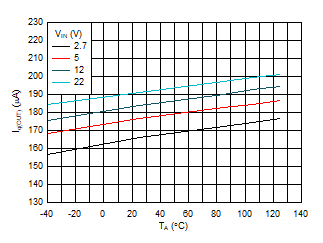 Figure 7-22 OUT Leakage Current During
ON-State Reverse Current Blocking
Figure 7-22 OUT Leakage Current During
ON-State Reverse Current Blocking Figure 7-24 OVC Threshold vs
Temperature
Figure 7-24 OVC Threshold vs
TemperatureFigure 7-26 OVC Clamping Voltage
(OVCSEL = GND) vs Load Current
 Figure 7-28 ITIMER Discharge
Differential Voltage Threshold vs Temperature
Figure 7-28 ITIMER Discharge
Differential Voltage Threshold vs Temperature Figure 7-30 ITIMER Internal Pullup
Resistance vs Temperature
Figure 7-30 ITIMER Internal Pullup
Resistance vs Temperature Figure 7-32 DVDT Charging Current vs
Temperature
Figure 7-32 DVDT Charging Current vs
Temperature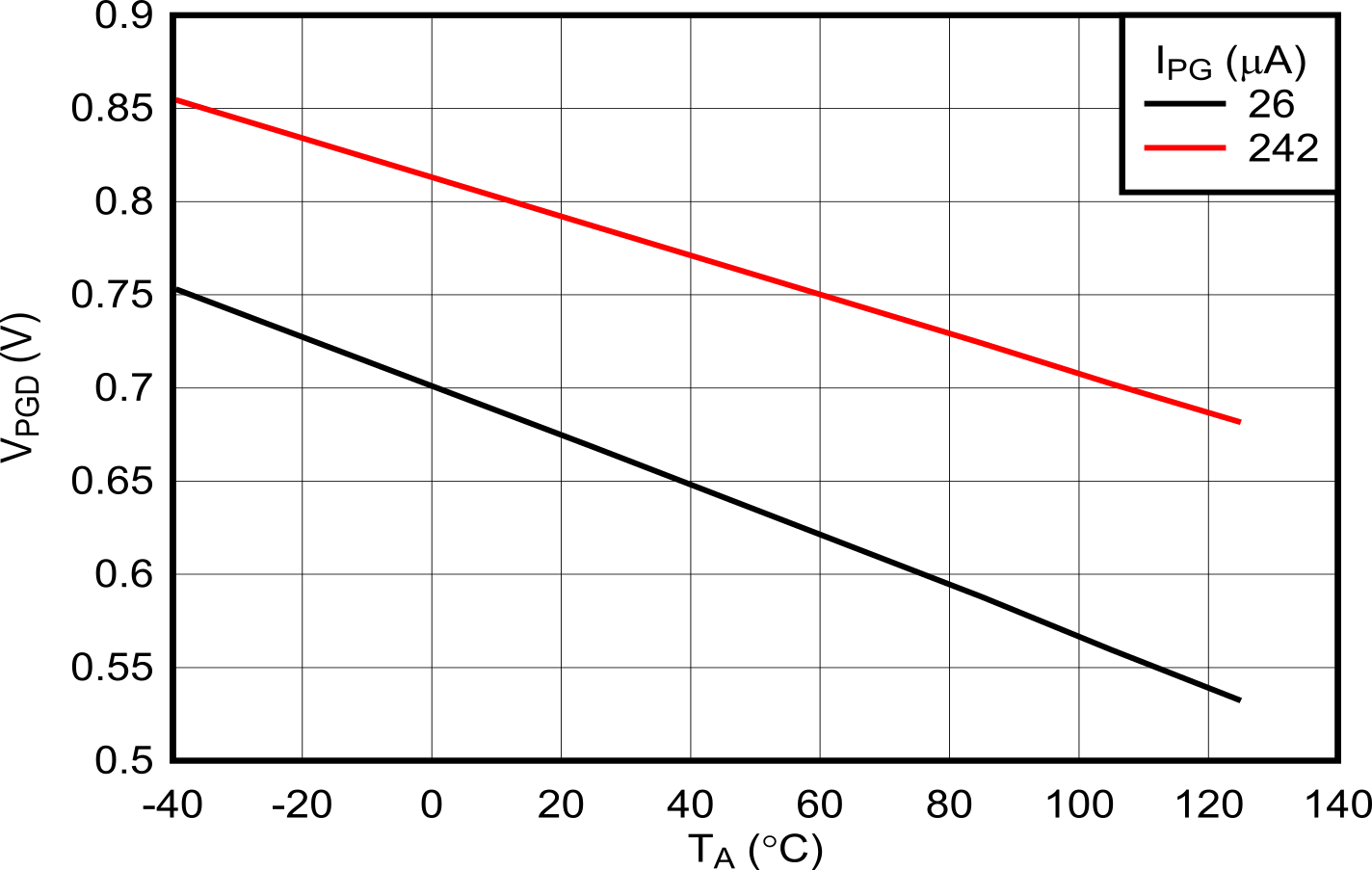 Figure 7-34 PG Low Voltage Without
Input Supply vs Temperature
Figure 7-34 PG Low Voltage Without
Input Supply vs TemperatureFigure 7-36 Time to Thermal Shut-Down
During Inrush State

| VIN = 12 V, COUT = 30 μF, CdVdt = Open, VEN/UVLO stepped up to 1.4 V |

| COUT = 220 μF, CdVdt = 10 nF, EN/UVLO connected to IN through resistor ladder, 12 V hot-plugged to IN |

| VIN = 12 V, COUT = 470 μF, ROUT = 5 Ω, CdVdt = 3300 pF, VEN/UVLO stepped up to 1.4 V |

| COUT = 220 μF, PG pulled up to 3 V, VIN ramped down from 0 V to -15 V and then ramped up to 0 V |

| ROVCSEL = GND, COUT = 220 μF, IOUT = 120 mA, VIN ramped up from 3.3 V to 6 V |

| ROVCSEL = 390 kΩ, COUT = 220 μF, IOUT = 300 mA, VIN ramped up from 12 V to 16.5 V |

| VIN = 12 V, CITIMER = 2.2 nF, COUT = 220 μF, RILM = 549 Ω, IOUT stepped from 3 A → 9 A |

| VIN = 12 V, CITIMER = 2.2 nF, COUT = 470 μF, RILM = 549 Ω, IOUT ramped from 4 A → 8 A |

| VIN = 12 V, RILM = 549 Ω, VEN/UVLO = 3.3 V, OUT stepped from Open → Short-circuit to GND |
Figure 7-3 Forward Voltage Drop vs
Load Current
 Figure 7-5 IN Quiescent Current vs
Temperature (TPS259472x Variant)
Figure 7-5 IN Quiescent Current vs
Temperature (TPS259472x Variant) Figure 7-7 IN Shutdown Current vs
Temperature
Figure 7-7 IN Shutdown Current vs
Temperature Figure 7-9 EN/UVLO Rising Threshold
vs Temperature
Figure 7-9 EN/UVLO Rising Threshold
vs Temperature Figure 7-11 EN/UVLO Shutdown Falling
Threshold vs Temperature
Figure 7-11 EN/UVLO Shutdown Falling
Threshold vs Temperature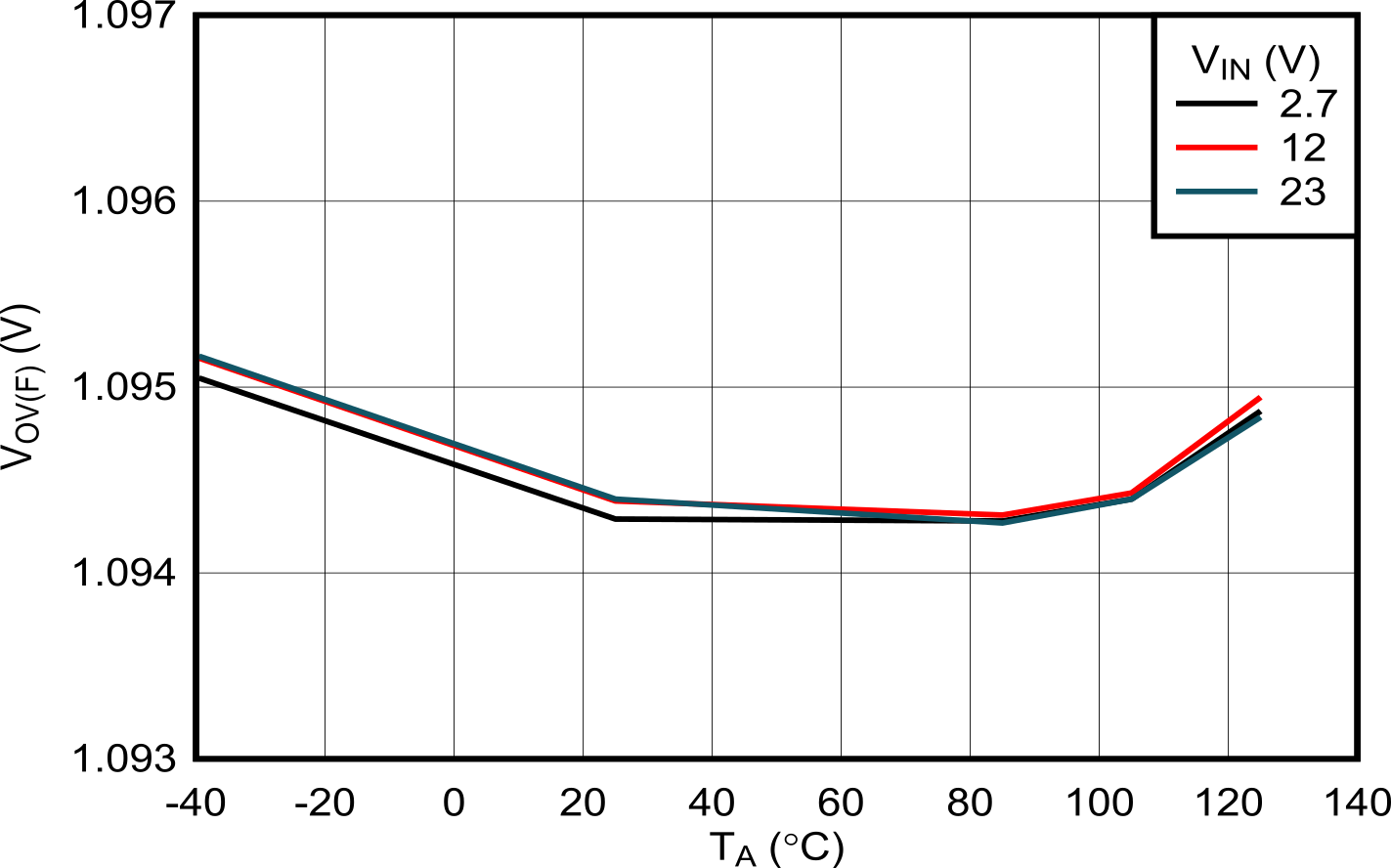 Figure 7-13 OVLO Falling Threshold vs
Temperature
Figure 7-13 OVLO Falling Threshold vs
TemperatureFigure 7-15 Overcurrent Threshold
Accuracy (Across Process, Voltage and Temperature)
 Figure 7-17 Scalable Fast-Trip
Threshold: Current Limit Threshold (ILIM) Ratio vs
Temperature
Figure 7-17 Scalable Fast-Trip
Threshold: Current Limit Threshold (ILIM) Ratio vs
TemperatureFigure 7-19 RCB - Forward Regulation
Voltage vs Temperature
Figure 7-21 RCB - Forward Comparator
Threshold vs Temperature
Figure 7-23 Reverse Leakage Current
During OFF-State
Figure 7-25 OVC Clamping Voltage
(OVCSEL = 392 kΩ to GND) vs Load Current
Figure 7-27 OVC Clamping Voltage
(OVCSEL = Open) vs Load Current
 Figure 7-29 ITIMER Discharge Current
vs Temperature
Figure 7-29 ITIMER Discharge Current
vs Temperature Figure 7-31 ITIMER Internal Pullup
Voltage vs Temperature
Figure 7-31 ITIMER Internal Pullup
Voltage vs Temperature Figure 7-33 PGTH Threshold vs
Temperature
Figure 7-33 PGTH Threshold vs
Temperature Figure 7-35 FLTb Pin Pulldown
Resistance vs Temperature
Figure 7-35 FLTb Pin Pulldown
Resistance vs TemperatureFigure 7-37 Time to Thermal Shut-Down
During Steady State
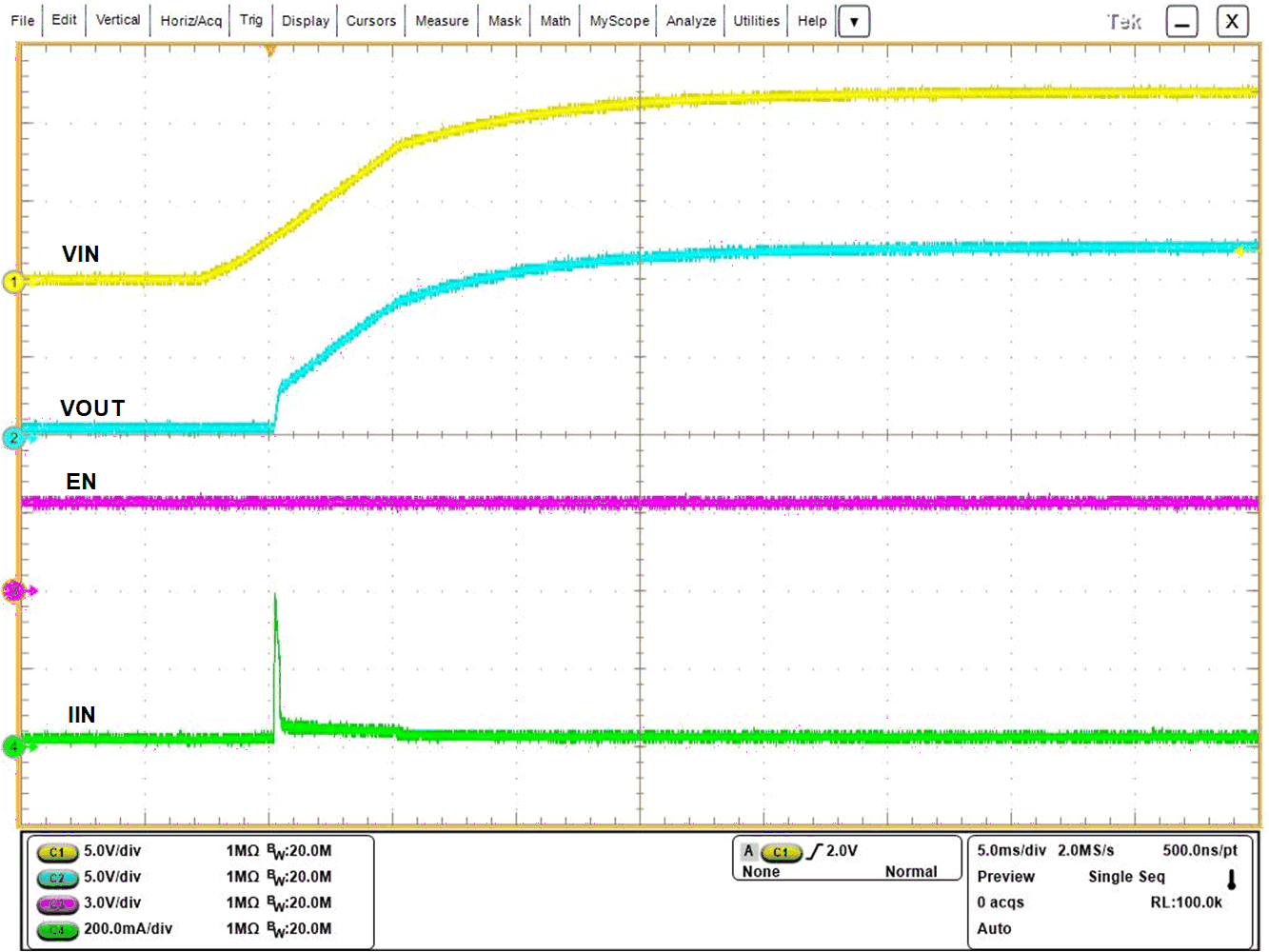
| VEN/UVLO = 3.3 V, COUT = 30 μF, CdVdt = Open, VIN ramped up to 12 V |

| VIN = 12 V, COUT = 470 μF, CdVdt = 3300 pF, VEN/UVLO stepped up to 1.4 V |

| COUT = 220 μF, PG pulled up to 3 V, -15 V hot-plugged to IN |

| COUT = 220 μF, ROUT = 20 Ω, VIN Overvoltage threshold set to 13.2 V, VIN ramped up from 12 V to 16 V |

| ROVCSEL = Open, COUT = 220 μF, IOUT = 150 mA, VIN ramped up from 5 V to 8 V |

| VIN = 12 V, CITIMER = 2.2 nF, COUT = 220 μF, RILM = 549 Ω, IOUT stepped from 3 A → 9 A → 3 A within 5 ms |

| VIN = 12 V, CITIMER = 2.2 nF, COUT = 470 μF, RILM = 549 Ω, IOUT ramped from 4 A → 8 A→ 4 A within 1 ms |

| VIN = 12 V, RILM = 549 Ω, VEN/UVLO = 3.3 V, OUT stepped from Open → Short-circuit to GND |
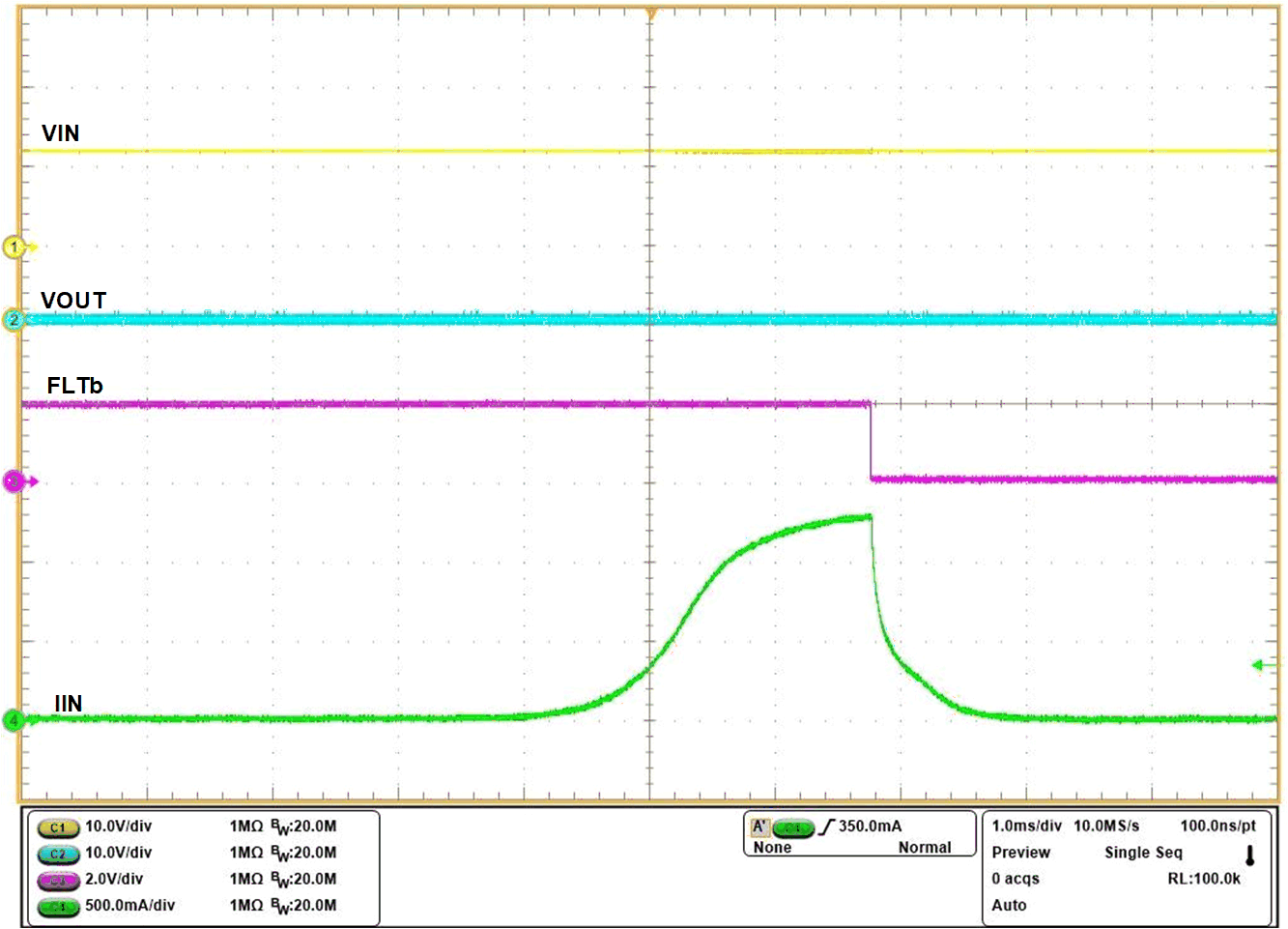
| VIN = 12 V, COUT = Open, OUT short-circuit to GND, RILM = 1650 Ω, VEN/UVLO stepped from 0 V to 3.3 V |